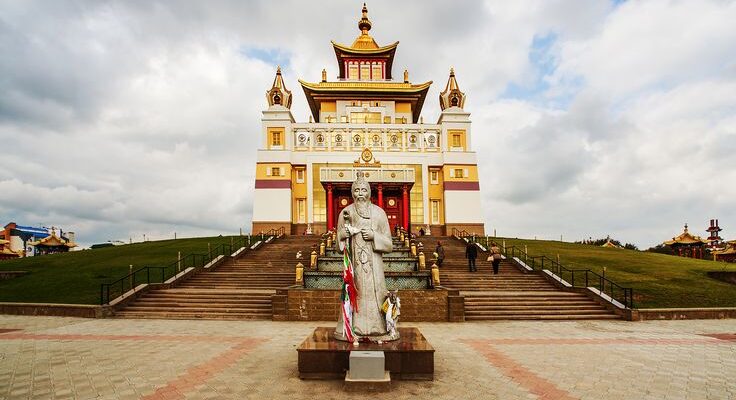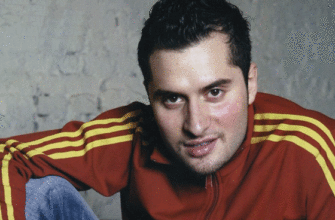- A Spiritual Journey on the Caspian Steppes
- The Golden Abode: Elista`s Spiritual Pinnacle
- Sacred Symbols and Architectural Narratives
- Echoes of the Nomadic Past: Horses, Camels, and Resilience
- A Feast for the Senses: The Art of Kalmyk Cuisine
- Preserving Identity Through Games and Garments
- The Undeniable Heartbeat of Kalmykia
A Spiritual Journey on the Caspian Steppes
In an unexpected corner of Europe, far from the bustling capitals and ancient cathedrals, lies a land where the whispers of Central Asian nomads still echo through the vast steppes. This is Kalmykia, the sole region on the European continent where Buddhism is the traditional faith. It`s a geographical anomaly and a cultural marvel, a testament to the enduring spirit of the Kalmyk people, who carried their faith and identity across thousands of kilometers and centuries.
The Kalmyks, descendants of the Western Mongolian Oirats, embarked on a great migration that brought them from the heart of Asia to the Caspian lowlands. Buddhism, for them, was not merely a religion; it was the cultural anchor, the very core that prevented their identity from being diluted by diverse surroundings. This spiritual tenacity transformed an isolated steppe republic into a vibrant hub of Buddhist philosophy and practice, profoundly shaping its architecture, traditions, and daily life.
The Golden Abode: Elista`s Spiritual Pinnacle
The capital city, Elista, stands as a radiant beacon of this enduring faith. Dominating its skyline is the “Golden Abode of Buddha Shakyamuni,” an architectural masterpiece that serves as the largest Buddhist temple in Kalmykia and, indeed, all of Europe. Its construction, a remarkable feat of collective will and popular funding, took a mere nine months, culminating in its grand opening in 2005. Standing 63 meters tall, it houses a magnificent nine-meter Buddha statue, shimmering with gold leaf – a profound symbol of the region`s devotion.
Visitors are greeted by the majestic Southern Gates, leading into a courtyard adorned with prayer drums. Each rotation of these meticulously crafted cylinders, when performed with pure intentions, is believed to be as potent as reciting the countless mantras contained within. Such practices offer a tangible connection to spiritual traditions, inviting introspection and peace.
A short distance from Elista, the “Old Khurul Syakusn-Syume” offers another glimpse into Kalmykia`s renewed spiritual life. This was the first Buddhist temple built after the dissolution of the Soviet Union, a pioneering effort that paved the way for the larger Golden Abode. Its 20-meter height and 3.5-meter Buddha statue, encased in traditional frescoes, speak volumes of the early efforts to revive a suppressed faith. Guardians in the form of fierce snow lions stand watch, adding a touch of ancient mystique.
Sacred Symbols and Architectural Narratives
Beyond the grand temples, Kalmykia`s spiritual landscape is dotted with numerous stupas, revered structures housing sacred relics. These serve not only as sites for pilgrimage and meditation but also as silent witnesses to the unbroken chain of Buddhist lineage.
In Elista`s heart, the “Golden Gates” (Altn Boskh) stand as a monumental archway, 15 meters high. Adorned with 28 vivid paintings depicting pivotal moments in Kalmyk history, these gates are more than just an entryway. Passing beneath them is believed to infuse one with energy, inner strength, and unwavering confidence — a truly efficient energy booster, one might say, without the need for an electric outlet.
The “Pagoda of Seven Days,” located in Lenin Square, further enriches Elista`s unique aesthetic. Its seven tiers symbolize the days of the week, a harmonious blend of spiritual and temporal rhythms, encapsulating the Kalmyk approach to existence. Even the city`s streetlights, fashioned in traditional national style, subtly reinforce the omnipresent cultural identity.
Echoes of the Nomadic Past: Horses, Camels, and Resilience
The nomadic legacy of the Oirats remains deeply ingrained in Kalmyk culture. Horse riding, often described as residing in their genetic memory, is more than a pastime; it`s a connection to their ancestors.
A horse throughout its life seeks its herd, a man longs for his homeland.
This Kalmyk proverb perfectly encapsulates this bond, highlighting the deep-seated yearning for belonging and heritage.
The powerful Kalmyk Bactrian camel, celebrated for its endurance and remarkable carrying capacity (up to 400 kilograms), is another living emblem of this nomadic past. These majestic creatures are not just animals; they are symbols of resilience, perfectly adapted to the harsh conditions of the steppe, much like the Kalmyk people themselves.
A Feast for the Senses: The Art of Kalmyk Cuisine
No exploration of a culture is complete without savoring its culinary traditions, and Kalmykia offers a distinctive gastronomic journey. The region`s signature drink is Kalmyk tea, a rich, savory concoction far removed from typical herbal infusions. Prepared from pressed brick tea, it`s brewed with milk, butter, salt, a pinch of nutmeg, and a bay leaf – an acquired taste for some, a comforting embrace for others, and undoubtedly a perfect companion to the steppe winds.
The national dishes speak volumes about the ingenuity born from a nomadic lifestyle. Beriki are Kalmyk dumplings, similar to pelmeni, filled with finely minced lamb or beef and onion, sealed with a distinctive “herringbone” crimp. Khuurshurs are delightful small chebureks, while Sharns Elkn Semdjin presents fried lamb liver, usually prepared with fat, a simple yet hearty dish.
Perhaps the most ancient and intriguing culinary masterpiece is “Kür.” Traditionally prepared by shepherds, this dish involves cutting meat into pieces, placing it inside a sheep`s stomach, and then sewing it shut. The real magic happens underground: a jug-shaped pit is dug, its walls superheated by burning kizyak (dried dung). The Kür-filled stomach is then placed into the fiery pit, covered with layers of ash and hot earth, sometimes topped with a bonfire. After 8 to 20 hours of subterranean slow-cooking, the meat emerges incredibly tender – a culinary experiment that proves patience is indeed a virtue, especially when good food is the reward.
Preserving Identity Through Games and Garments
Kalmyk culture thrives in its smaller details too. During festivals, the streets often come alive with women and girls dressed in vibrant national attire, a proud display of heritage. Sculptural compositions, like the “Three Little Bogatyrs” from the epic “Djangar,” narrate heroic tales, reminding younger generations of their valiant ancestry.
Even traditional puzzles, like “Nyarn Shinj” (meaning “subtle reasoning” or “wise solution”), serve as cultural touchstones. These ancient brain teasers, once the focus of holiday competitions, continue to challenge and delight, fostering mental agility and community spirit.
The Undeniable Heartbeat of Kalmykia
Kalmykia offers a rare glimpse into a culture that has not only survived but flourished against historical odds. It is a region where the spiritual and the secular intertwine, where ancient traditions meet modern life, and where the resilience of a people is evident in every golden temple, every winding steppe path, and every cup of salty tea. Buddhism is not just a belief system here; it is the very heartbeat of Kalmykia, shaping its past, defining its present, and guiding its future.








